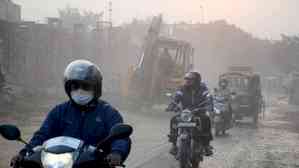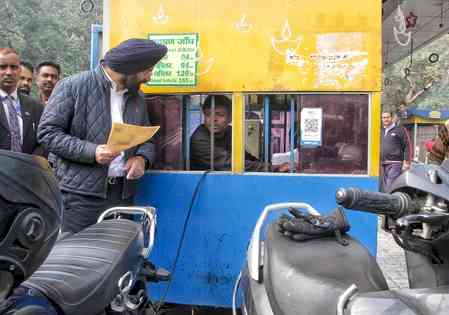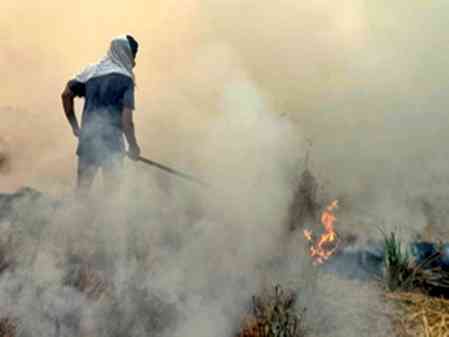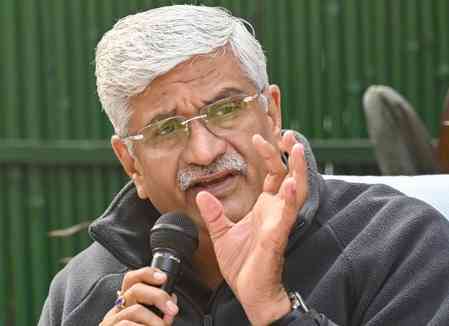Unplanned Patna's ambient air is now hazardous to human health
If you are a resident of Patna and are planning to go for a morning walk, it would not be a good idea given the hazardous air quality of the city. The Air Quality Index (AQI) of Patna is the worst, not only in the country but in the world, this winter season.

Ajay Kumar
Patna, Nov 19 (IANS) If you are a resident of Patna and are planning to go for a morning walk, it would not be a good idea given the hazardous air quality of the city. The Air Quality Index (AQI) of Patna is the worst, not only in the country but in the world, this winter season.
The worst part is that the government and its agencies have no plan to tackle this worrying situation.
There are various factors that are impacting the AQI of Patna, but the major reason is corruption in the construction of roads and colonies in this unplanned city.
“In Patna, the majority of roads are made of cement, concrete and sand and as the contractors have used low quality material, these roads have deteriorated and the surface is covered with a kind dust. As a result, every time vehicles ply on those roads, the dust rises and adds to the air pollution,” said Shashi Bhushan Singh, a resident of RK Puram, Danapur.
Add to this the fact that Patna has developed in an unplanned manner and as a result it lacks a green cover.
Central Patna is considered the heart of the city and places like Boring Road, Boring Canal Road, Buddha Colony, Rajapur, Mainpura, Digha, Dujra, Mandiri, Basghat, Lodipur, Sabjibagh, Lohanipur, Kadam Kuan, Agam Kuan, Gaighat, Guljarbag, Patna City and Maroofganj in East Patna are densely populated.
All available land has been acquired and no space has been left for growing trees or plants.
This is because Government agencies such as Bihar Rajya Awas Board, Patna Municipal Corporation and the Ministry of Urban Affairs have completely failed to develop this city in a planned manner and are busy earning revenue through the registration of plots and houses.
Plus, the government agencies have allowed people to develop unauthorised colonies without proper planning, drainage systems and water pipelines.
Due to this unrestricted growth, the Patliputra Industrial Area now comes in the heart of the city.
“Apart from the four-lane Ganga Path, Atal Path and AIIMS-Digha elevated roads the Bihar Government has not made any new roads in the city. As a result there are major traffic jams as the number of vehicles keeps increasing each year and the roads remain the same,” said Shivani Jain, a resident of Boring Road, Patna.
“Now, with Bihar experiencing an early onset of winter, with the minimum temperature falling to 10-15 degree Celsius at night, the pollution hangs low due to the cold air. And as there are very few trees and plants in the city, the natural adsorbents of the pollutants are also missing. So this mix of vehicular emissions, dust pollution and cold air creates smog that hangs over the city in the mornings and evenings,” Jain said.
As a result of all these factors, the AQI of Patna reached 589 on Friday morning which is extremely hazardous for humans and animals alike.
In fact, the plummeting AQI in Patna was worse than that of Delhi by more than 100 points as the national Capital’s AQI was at 476 on Friday morning.
Not only Patna, four more cities of Bihar are in the top 10 in the list of most polluted cities in the country. Bhagalpur registered an AQI of 388, Rajgir 374, Saharsa 353 and Begusarai 340. These numbers are also considered to be harmful for human and animal health.
With the city lacking a green cover that acts as a natural adsorbent of pollutants the civic bodies are going for man-made solutions.
“As the AQI is worsening in the city, we are using anti-smog guns and water sprinkling equipment to minimise air pollution. The Patna Municipal Corporation has 12 anti-smog guns and 13 water sprinkling guns. We have directed the operators to use these machines for at least four hours in two shifts in every circle of the state capital,” said Animesh Parashar, Commissioner, Patna Municipal Corporation.
“As the wind speed also increases in the city, it allows dust to mix in the air. We are sprinkling water on the roads as well as on trees and footpaths to reduce threats,” Parashar added.
AQI from 0 to 50 is considered ‘good’, from 51 to 100 it is considered ‘moderate’, from 101 to 150 is ‘unhealthy’ for sensitive groups, from 151 to 200 it is ‘unhealthy’ for all groups, from 201 to 300 it is considered ‘very unhealthy’ while from 301 to 400 it is in the ‘severe’ category and from 401 to 500 it is in the ‘hazardous’ category for everyone.


 IANS
IANS 










